August 30, 2019 at 10:43 am
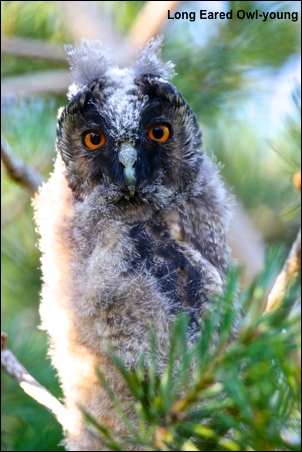 This weeks blog photo is of a four week old Long Eared Owl and was one of three fledged this year that the male in last weeks gallery was providing for. Last year there was an abundance of voles and he was able to capture enough of them to ensure that all five young Owls fledged successfully. It meant that there was more aerial activity and he provided me with some fantastic photo opportunities. Those of you who have not seen last year’s hunting shots then I have repeated some of my favourites this week together with a photo of this years female, who is showing aggression, by raising her ear tufts as I am stood not far from one of her young. click here
This weeks blog photo is of a four week old Long Eared Owl and was one of three fledged this year that the male in last weeks gallery was providing for. Last year there was an abundance of voles and he was able to capture enough of them to ensure that all five young Owls fledged successfully. It meant that there was more aerial activity and he provided me with some fantastic photo opportunities. Those of you who have not seen last year’s hunting shots then I have repeated some of my favourites this week together with a photo of this years female, who is showing aggression, by raising her ear tufts as I am stood not far from one of her young. click here
August 24, 2019 at 8:04 pm
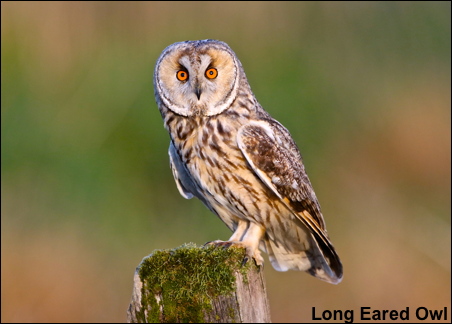 To me, this year, a photo of a hunting male Long Eared Owl represented the greatest challenge the high Pennines could offer. There are no short cuts and todays blog photo was accomplished after fifty nights in the hills spread over three months. Your first comments after admiring his eyes might be to ask the question – where are his long ears? These are only erected when the Owl is anxious, threatened or facing a human being. This Owl and the others in the gallery are totally relaxed, in full hunting mode and their ears are lying on the top of their head. In fact he is so used to my presence under the camouflage cloth that on one occasion he was going to alight on my head and only diverted when he was inches away.
To me, this year, a photo of a hunting male Long Eared Owl represented the greatest challenge the high Pennines could offer. There are no short cuts and todays blog photo was accomplished after fifty nights in the hills spread over three months. Your first comments after admiring his eyes might be to ask the question – where are his long ears? These are only erected when the Owl is anxious, threatened or facing a human being. This Owl and the others in the gallery are totally relaxed, in full hunting mode and their ears are lying on the top of their head. In fact he is so used to my presence under the camouflage cloth that on one occasion he was going to alight on my head and only diverted when he was inches away.
I have always maintained that in wildlife photography your results are directly proportionate to the time that you put in. I watched this roosting Long Eared Owl for some nights and soon realised that when he started to hunt, at dusk, he would alight on fence posts that surrounded the forest. I lay hidden opposite these posts but did not know which one he would use. The gallery photos show him on several of these posts but I wanted something more photogenic so I carried a moss covered stump from deep in the forest and placed this in-between the fence and his roosting tree – but would he use it? At 7.10pm on the second night he alighted and I had my photos. I believe in the uniqueness of all my photos so the post has been removed and placed back in the forest to gain more moss in readiness for next year – bring it on!! Click here
August 18, 2019 at 3:15 pm
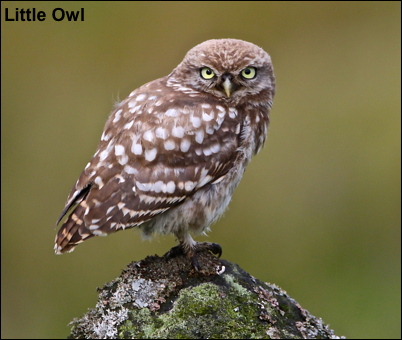 Whenever you visit the moorlands you never know what you are going to encounter and on many occasions you return having seen nothing more than a Meadow Pipit. However, on a recent visit I was in for a surprise. Not only did I find one fledged Little Owl but in the space of a mile I came across three broods of fledged young with a couple of adults. There may only have been a couple of young per pair but at least it has been a success story which is more than can be said for the Short Eared Owls. The periods of heavy rain have ensured that all four pairs that I found in May have produced no young this year. At least the Little Owls have been able to shelter in the dry-stone walls but for the Short Eared Owls there has been no such shelter. For photos of Little Owl young. click here
Whenever you visit the moorlands you never know what you are going to encounter and on many occasions you return having seen nothing more than a Meadow Pipit. However, on a recent visit I was in for a surprise. Not only did I find one fledged Little Owl but in the space of a mile I came across three broods of fledged young with a couple of adults. There may only have been a couple of young per pair but at least it has been a success story which is more than can be said for the Short Eared Owls. The periods of heavy rain have ensured that all four pairs that I found in May have produced no young this year. At least the Little Owls have been able to shelter in the dry-stone walls but for the Short Eared Owls there has been no such shelter. For photos of Little Owl young. click here
August 9, 2019 at 6:29 pm
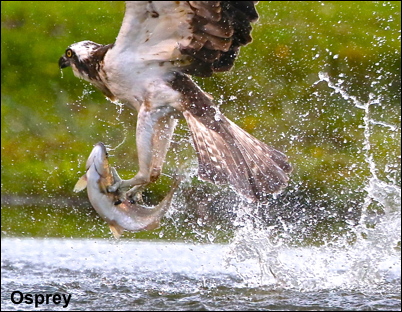 There is something quite special about filming Ospreys from close quarters as they fish for Trout in the Spey valley. Last week I spent two mornings before 5.00am awaiting the arrival of fishing Ospreys.The speed of their dive is such that the Osprey is completely immersed in the water during the dive and they seldom leave without a two pounds trout in their talons. One day I might be lucky enough to film them, before 5.00am, in sunlight but for now enjoy this weeks gallery. click here
There is something quite special about filming Ospreys from close quarters as they fish for Trout in the Spey valley. Last week I spent two mornings before 5.00am awaiting the arrival of fishing Ospreys.The speed of their dive is such that the Osprey is completely immersed in the water during the dive and they seldom leave without a two pounds trout in their talons. One day I might be lucky enough to film them, before 5.00am, in sunlight but for now enjoy this weeks gallery. click here
August 4, 2019 at 8:15 am
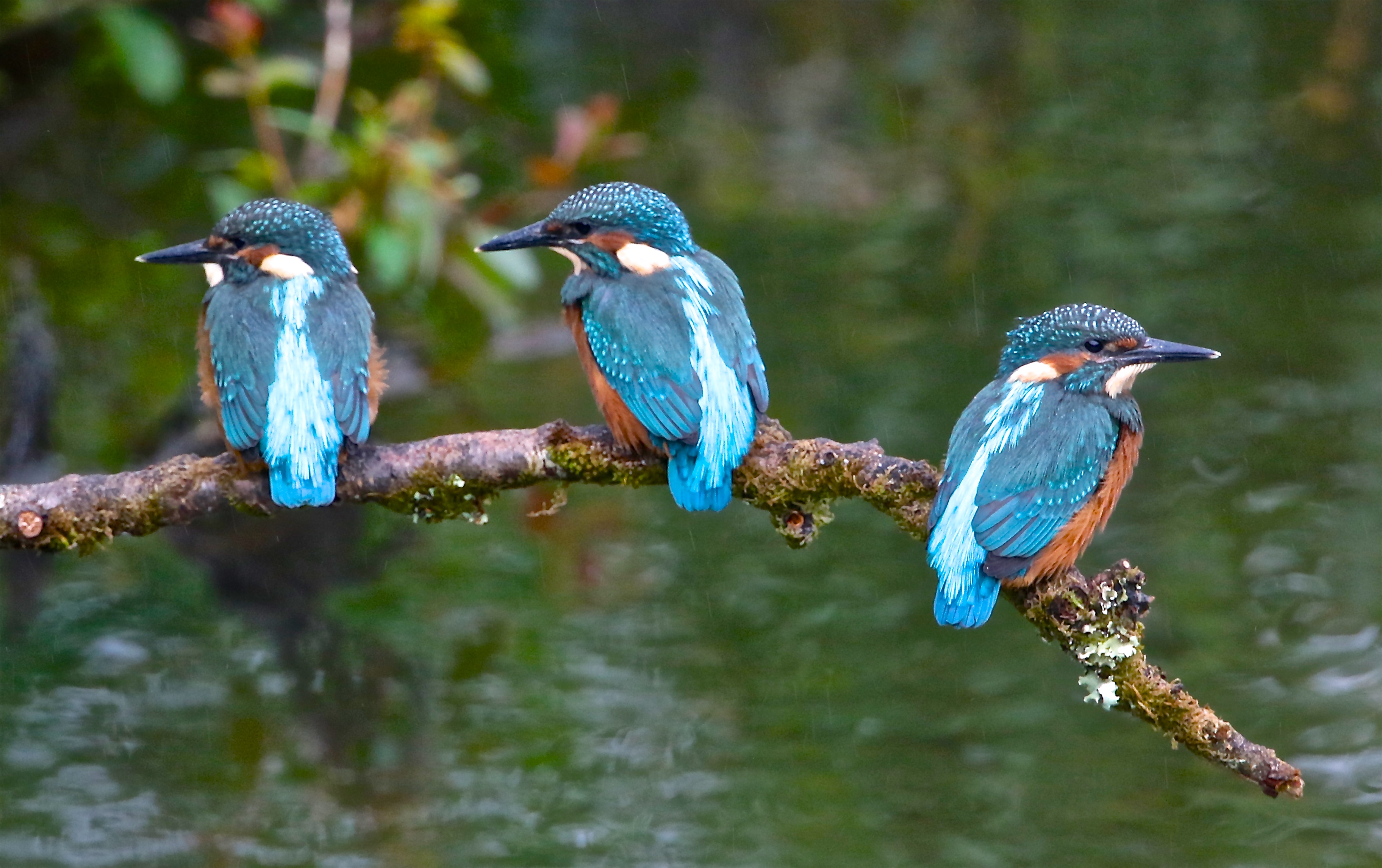 Twenty three days after hatching the young Kingfishers finally left the tunnel. Sods law would dictate that they fledged on a day of driving drizzle and high wind. Somehow I managed to keep the camera dry and at 8.00am I had photos of two and three of the young together. My dream of five of the young together on a branch will have to waite for another year!
Twenty three days after hatching the young Kingfishers finally left the tunnel. Sods law would dictate that they fledged on a day of driving drizzle and high wind. Somehow I managed to keep the camera dry and at 8.00am I had photos of two and three of the young together. My dream of five of the young together on a branch will have to waite for another year!
This weeks gallery is of the young who all have a white egg tooth on the tip of their bill (which they use to break through the eggshell) and dull coral coloured feet. Click here
 This weeks blog photo is of a four week old Long Eared Owl and was one of three fledged this year that the male in last weeks gallery was providing for. Last year there was an abundance of voles and he was able to capture enough of them to ensure that all five young Owls fledged successfully. It meant that there was more aerial activity and he provided me with some fantastic photo opportunities. Those of you who have not seen last year’s hunting shots then I have repeated some of my favourites this week together with a photo of this years female, who is showing aggression, by raising her ear tufts as I am stood not far from one of her young. click here
This weeks blog photo is of a four week old Long Eared Owl and was one of three fledged this year that the male in last weeks gallery was providing for. Last year there was an abundance of voles and he was able to capture enough of them to ensure that all five young Owls fledged successfully. It meant that there was more aerial activity and he provided me with some fantastic photo opportunities. Those of you who have not seen last year’s hunting shots then I have repeated some of my favourites this week together with a photo of this years female, who is showing aggression, by raising her ear tufts as I am stood not far from one of her young. click here

 To me, this year, a photo of a hunting male Long Eared Owl represented the greatest challenge the high Pennines could offer. There are no short cuts and todays blog photo was accomplished after fifty nights in the hills spread over three months. Your first comments after admiring his eyes might be to ask the question – where are his long ears? These are only erected when the Owl is anxious, threatened or facing a human being. This Owl and the others in the gallery are totally relaxed, in full hunting mode and their ears are lying on the top of their head. In fact he is so used to my presence under the camouflage cloth that on one occasion he was going to alight on my head and only diverted when he was inches away.
To me, this year, a photo of a hunting male Long Eared Owl represented the greatest challenge the high Pennines could offer. There are no short cuts and todays blog photo was accomplished after fifty nights in the hills spread over three months. Your first comments after admiring his eyes might be to ask the question – where are his long ears? These are only erected when the Owl is anxious, threatened or facing a human being. This Owl and the others in the gallery are totally relaxed, in full hunting mode and their ears are lying on the top of their head. In fact he is so used to my presence under the camouflage cloth that on one occasion he was going to alight on my head and only diverted when he was inches away. Whenever you visit the moorlands you never know what you are going to encounter and on many occasions you return having seen nothing more than a Meadow Pipit. However, on a recent visit I was in for a surprise. Not only did I find one fledged Little Owl but in the space of a mile I came across three broods of fledged young with a couple of adults. There may only have been a couple of young per pair but at least it has been a success story which is more than can be said for the Short Eared Owls. The periods of heavy rain have ensured that all four pairs that I found in May have produced no young this year. At least the Little Owls have been able to shelter in the dry-stone walls but for the Short Eared Owls there has been no such shelter. For photos of Little Owl young.
Whenever you visit the moorlands you never know what you are going to encounter and on many occasions you return having seen nothing more than a Meadow Pipit. However, on a recent visit I was in for a surprise. Not only did I find one fledged Little Owl but in the space of a mile I came across three broods of fledged young with a couple of adults. There may only have been a couple of young per pair but at least it has been a success story which is more than can be said for the Short Eared Owls. The periods of heavy rain have ensured that all four pairs that I found in May have produced no young this year. At least the Little Owls have been able to shelter in the dry-stone walls but for the Short Eared Owls there has been no such shelter. For photos of Little Owl young.  There is something quite special about filming Ospreys from close quarters as they fish for Trout in the Spey valley. Last week I spent two mornings before 5.00am awaiting the arrival of fishing Ospreys.The speed of their dive is such that the Osprey is completely immersed in the water during the dive and they seldom leave without a two pounds trout in their talons. One day I might be lucky enough to film them, before 5.00am, in sunlight but for now enjoy this weeks gallery.
There is something quite special about filming Ospreys from close quarters as they fish for Trout in the Spey valley. Last week I spent two mornings before 5.00am awaiting the arrival of fishing Ospreys.The speed of their dive is such that the Osprey is completely immersed in the water during the dive and they seldom leave without a two pounds trout in their talons. One day I might be lucky enough to film them, before 5.00am, in sunlight but for now enjoy this weeks gallery.  Twenty three days after hatching the young Kingfishers finally left the tunnel. Sods law would dictate that they fledged on a day of driving drizzle and high wind. Somehow I managed to keep the camera dry and at 8.00am I had photos of two and three of the young together. My dream of five of the young together on a branch will have to waite for another year!
Twenty three days after hatching the young Kingfishers finally left the tunnel. Sods law would dictate that they fledged on a day of driving drizzle and high wind. Somehow I managed to keep the camera dry and at 8.00am I had photos of two and three of the young together. My dream of five of the young together on a branch will have to waite for another year!